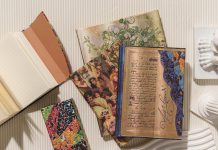We hate to be the ones you tell you, but summer is almost over. For many people, that means back-to-school is fast approaching. If you are making a new (school) year’s resolution to study smarter, we are here to help!
This time last year we took a look at some of the best ways to take notes in a class or lecture (or when interviewing subjects for your next story!) in our post Writing Wednesday: Note-taking Strategies for Students of All Ages. But if it’s not the taking so much as the studying of the notes that you would like to improve, we have rounded up some easy-to-implement tips for creating and using more effective study guides.
Whether you are studying for a big test or compiling your research before writing an essay or novel, concise compilation is key to better reorientation and comprehension of the information you’ve collected.
Focus on the “Big” Ideas
Not every note you take deserves a spot in your study guide. If you are just going to copy down all your research, class notes and textbook copy, then why bother creating this separate study guide in the first place? Go over the information from all your sources and find out what is getting repeated: these are the “big ideas.” Anything that stands out on its own, or has been covered in assignments or tests, is probably important enough to deserve a spot in your guide.
Categorise
It should go without saying that it is helpful to create separate study guides for each class or subject. But, it is the sub-categories you use that can really help you properly filter and retain the pertinent information. The notes you have taken throughout your research process or the class term are likely chronological, but not necessarily sorted by subject. Your study guide is the ideal spot to arrange all of this information, so when you are reading through it in preparation for a test or final project you are truly able to see how things connect and can maintain your train of thought as you delve deeper into a specific topic.
Be Format-Flexible
Say you have picked out a really beautiful new lined journal (perhaps a Paperblanks®?) for your study guide, but once you start working on it you realise you need grid paper to create graphs. That’s okay! It is important to be flexible when it comes to creating the most effective guide, so be prepared to cut and paste as needed to make sure you have all your notes, formulas and charts in one place.
Do. Not. Procrastinate.
It is bad enough to keep putting off studying. But if you procrastinate too long when it comes to compiling your notes and creating your guide, you will be in even worse shape. If you are exceptionally organised and so inclined, it only helps to start thinking of categories and big ideas as you take your notes, so you can more easily sort them when the time comes to study. But, that may be overdoing it and only for the most neurotic of us! Either way, once you find out a deadline or test date, it is important to set yourself a study and preparation schedule and STICK WITH IT. This will help you avoid last-minute panic and give you time to find the answers to any questions that may remain.
Use Your Guide
Building your study guide is actually a pretty helpful form of studying in itself, but nothing is better than repeated viewings when it comes to retention and understanding. Give yourself space on the page to take notes and actually practice any formulas that you may be asked to use. Good luck!







